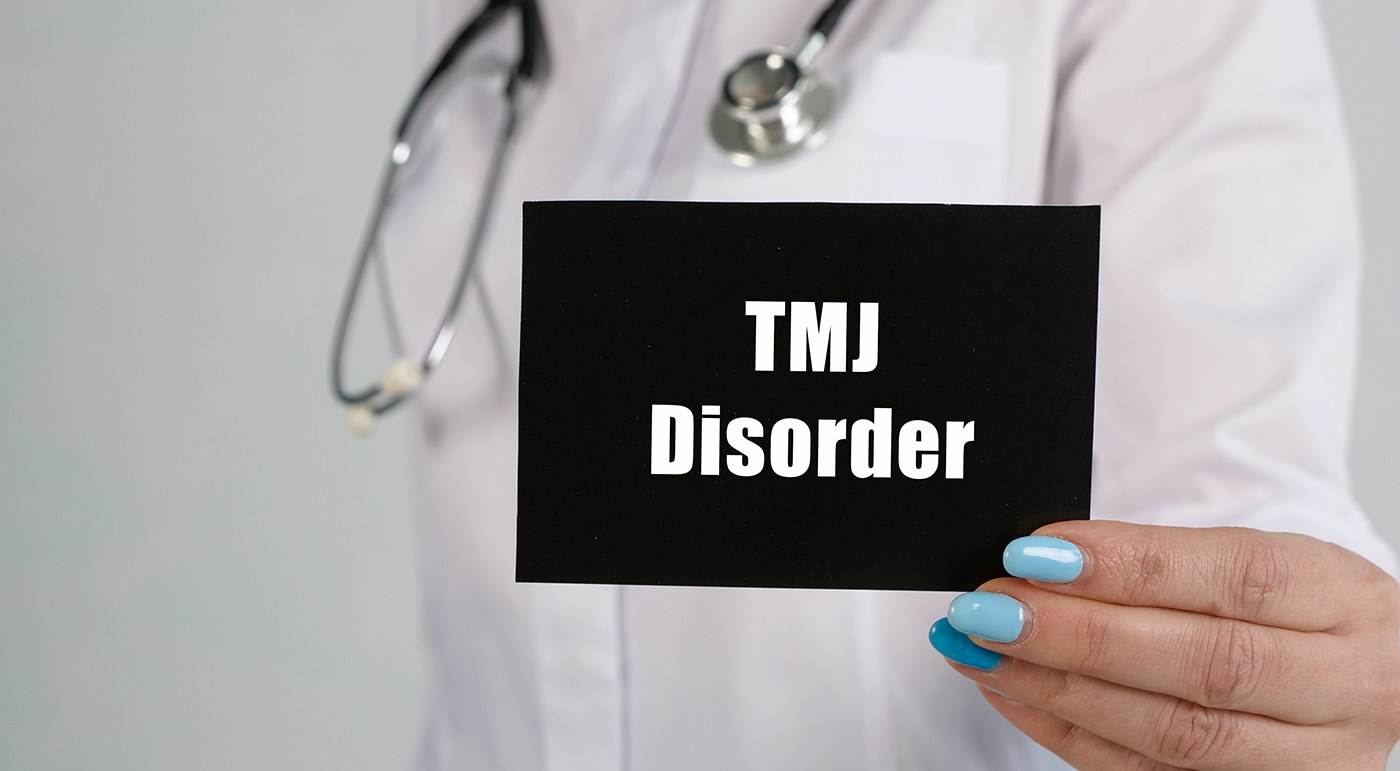TMJ Treatment – Tulsa, OK
Finally Find Jaw Pain Relief
Do you struggle with persistent jaw pain and related symptoms, such as headaches and difficulty chewing? You might have TMJ disorder (TMD). This condition can have a big impact on your daily quality of life! The good news is that TMD is usually very manageable. At My Dentist in Tulsa, we are proud to offer multiple types of TMJ treatment that may be the key to helping you finally find jaw pain relief!
Why Choose My Dentist for TMJ Treatment?
- Multiple Treatment Options
- Experienced & Knowledgeable Dental Team
- Effective & Long-Lasting Pain Relief
What Is TMJ Disorder?
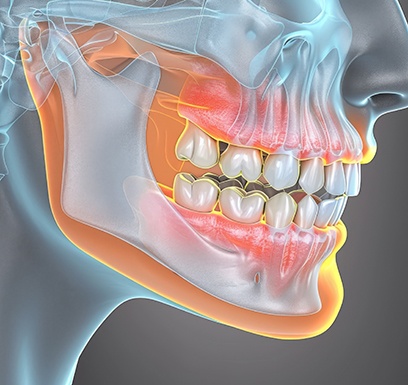
TMJ is an acronym that stands for temporomandibular joint. Everyone has two TMJs, one located in front of each ear. They control the movement of your lower jaw. When injury or stress negatively affects the TMJs, you may experience a range of uncomfortable symptoms. Such issues fall under the broad umbrella of TMJ disorder (TMD).
Anyone can develop TMD, but it is most common among certain groups, including women of childbearing age and individuals with underlying conditions, such as arthritis.
Symptoms of TMJ Disorder

TMJ disorder can cause dozens of symptoms, some of which might not even seem like they are related to the health of your jaw joint! You may need to get evaluated for TMD if you are experiencing any of the following:
- Tenderness and pain in your jaw
- The sensation of lockjaw or limited jaw mobility
- Popping and clicking sensations in your jaw
- Earaches or ringing in your ears
- Neck, back, and shoulder pain
- Pain behind your eyes
- Changes in your bite
- Frequent headaches and migraines
Types of TMJ Treatment
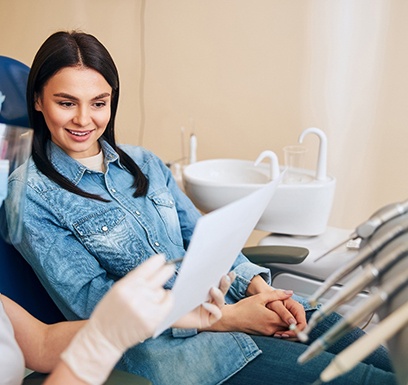
Before we can recommend a treatment for your TMD, we will thoroughly assess your teeth and jaw. This may involve X-rays as well as a visual examination. Be sure to tell us as much as possible about your symptoms. Once we gather adequate information, we may be able to determine what is causing your condition and how it can best be treated. We might tell you that one of the following treatment options could be effective in your unique case:
Occlusal Splint
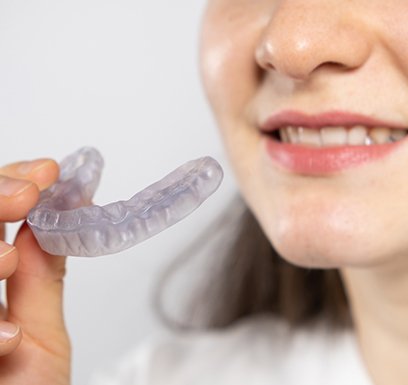
An occlusal splint is an oral orthotic device that resembles a mouthguard that you would wear for sports. These splints are typically worn only at night. They can prevent teeth grinding (a common cause of TMD) and train your lower jaw to rest in a position that minimizes stress on your TMJs.
Equilibration/Occlusal Adjustment

In some cases, TMD arises due to minor discrepancies in occlusion (bite). During equilibration, we make minor adjustments to the surface of your teeth and/or restorations in order to allow your upper and lower teeth to work more harmoniously together. This can relieve strain on your TMJs and your facial muscles.
BOTOX for TMJ Treatment
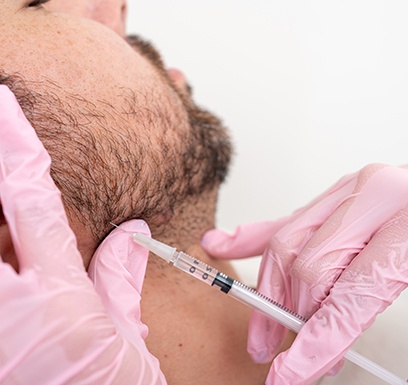
While BOTOX is known primarily as a cosmetic treatment, it also has some noteworthy medical applications! We can use it to force your facial muscles to relax, which can lead to significant relief of symptoms like jaw pain, neck pain, and limited jaw mobility. The results can last for several months at a time. Often, BOTOX is most effective when it is combined with other forms of TMJ treatment.
What Is BOTOX?
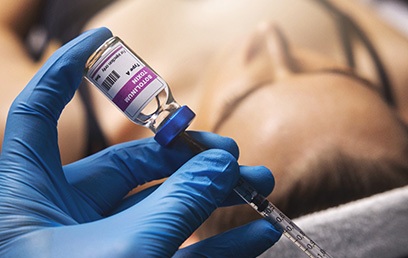
BOTOX and similar treatments, such as Xeomin, are formulas that feature botulinum toxin. The toxin is a type of bacteria that, when it is strategically injected into muscles, limits their movements. The biggest outward effect of BOTOX is that it can reduce the appearance of wrinkles, but it can do even more for individuals with TMJ.
By forcing the muscles around your TMJs to relax, BOTOX can reduce muscle pain and tension throughout your jaw, face, neck, and shoulders. The treatment is fast, and you may start to notice positive results within a week or so of your injection appointment.
Are You a Good Candidate for BOTOX for TMJ Treatment?

BOTOX for TMJ disorder might be a good fit for you if you are struggling with any of the following symptoms:
- Pain and tenderness in your jaw and nearby muscles
- Limited jaw mobility
- Clicking and popping noises when you open and close your mouth
- Earaches or tinnitus
- Back and neck pain
- Noticeable changes in your bite
BOTOX can be especially beneficial for individuals who experience bruxism (teeth grinding) and muscle symptoms as a result of TMD.
How Can BOTOX Treat TMJ Disorder?

BOTOX has a high success rate when it comes to producing symptom relief in individuals with TMD. If this treatment is right for you, we will carefully administer your injections, and within a few days, you may start to notice several benefits, including:
- Elimination of headaches caused by nighttime grinding
- Minimization of lockjaw
- Reduced discomfort when using the jaw
- Reduced shoulder and neck pain
- Substantially reduced jaw tension
Because BOTOX only treats the symptoms of TMD (rather than its primary cause), it works best when it is used alongside other treatments, which reduce the root cause of the disorder. Some patients only need one round of injections, whereas others return every 3 – 6 months for additional treatment to extend their pain relief.
TMJ Treatment FAQs
Can TMJ Be Cured Permanently?
While some symptoms of TMJ disorders may fade with time, managing them with professional care is essential. At My Dentist Midtown, we offer a wide variety of treatments for both temporary relief and long-lasting solutions.
BOTOX injections can relax your jaw muscles, often giving your temporomandibular joint time to heal. However, occlusal adjustments and splints address the source of the pain, potentially leading to a permanent solution with the proper treatment plan and commitment. Each case is unique, so we recommend scheduling a consultation to discuss your options with our team.
Can TMJ Be Fixed with Invisalign?
In some cases, Invisalign may help improve TMJ symptoms by aligning teeth and correcting bite issues. However, Invisalign isn’t a direct treatment for TMJ. At our Tulsa dental office, we focus on proven methods to address the root causes of jaw pain and discomfort.
During your consultation, our team will review your case and determine if Invisalign is the best course of action for you. Clear aligners are a significant commitment of time and money, and we want to ensure that your investment is well-placed and beneficial for your specific needs.
How Long Does Occlusal Equilibration Take for TMJ?
Occlusal equilibration, also known as bite adjustment, is designed to balance your bite and alleviate TMJ strain. Most sessions take between 30 and 60 minutes, depending on the complexity of your case, and many patients experience some relief soon after the procedure. However, the time it takes to feel the full effects can vary.
Some patients may require multiple sessions to achieve the best results, but noticeable improvement is often seen quickly—sometimes within a few days or a week.
Is BOTOX for TMJ Safe?
Yes, BOTOX is a safe and effective treatment for managing TMJ symptoms when performed by trained professionals. At My Dentist Midtown, we use BOTOX to relax your jaw muscles, relieve tension and reduce pain.
This minimally invasive treatment has been FDA-approved for several medical uses and is widely known for its safety. Although side effects can occur in rare cases, they are typically mild and temporary. This makes BOTOX a fantastic option for many patients who need relief as soon as possible.

